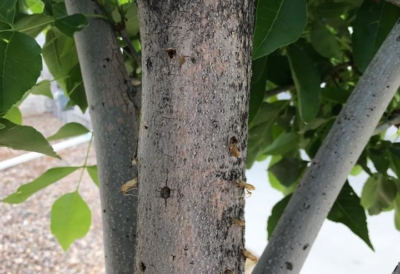Lilac/Ash Borer Control
While most trees will not be killed by the lilac/ash borer, you need to avoid infestation. The most important trees to look out for are those that are deemed high risk, including trees that get limited water, have had previous damage, or are in poor sites. Before controlling the creatures, it’s important to look after trees by offering extra water and nutrition. From there, you can follow these tips 
Lilac/ash Borer Prevention Through Insecticides
Prevention is better than treating after an infestation. Insecticides are commonly used to kill the larvae before they have the chance to get into the trees. A number of pyrethroid insecticides are preferred, although some chlorantraniprole insecticides are growing in favor.
You will need to apply the insecticides around the time that the eggs are expected to hatch. The adults will emerge when the temperatures reach around 60F, which can be in April-May depending on the climate and location. You’ll want to start using the sprays from as early as mid-April.
Trapping During the Spring
If you are looking for control after learning about an infestation, you’ll need to use traps that have the clearwing borer sex pheromone to lure the adults. You can also catch other types of moths, especially in midsummer. By trapping the moths, you can learn more about the flight activity. This can help take steps to control the laying of eggs and managing the prevention for next season.
If you are struggling to get your lilac/ash borer infestation under control, you will need to hire a professional tree surgeon. You may find that just leaving the infestation is recommended, as the moths succumb to other prey and infection, leading to little damage to your tree. Most tree surgeons will act when the life of your tree is in danger. For more information on lilac/ash borer preventive spraying, contact SprayTech at 720.248.0000.

